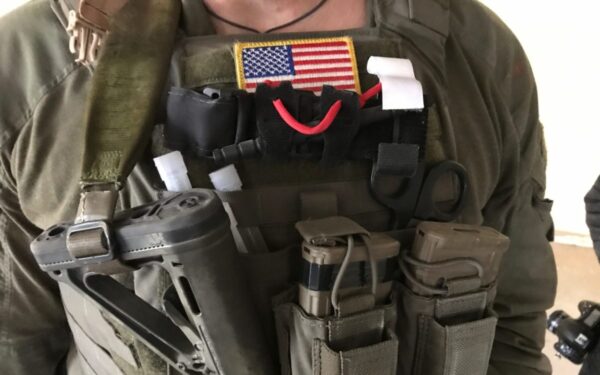
Tourniquet environmental wear: is time of the essence?
- Posted by Mike Shertz MD/18D
- Categories (M) Massive Hemorrhage, Equipment
CAT Environmental Breakage
🕖 Reading Time, 3 minutesWe receive frequent questions about shelf-life and environmental degradation of tourniquets.
There has been some discussion in the US Department of Defense about declaring a five-year self-life for new, unused commercial tourniquets in the inventory. Certainly, even without use or environmental exposure, we know materials degrade with age. Is an unused, still in the packaging, stored in a climate-controlled warehouse tourniquet suddenly unreliable and prone to breakage once it is five years old? We have no idea, as I am not aware of any literature actually looking at this question. As to environmental wear and tear increasing the breakage rates of tourniquets, there is data addressing this question. There was an informal survey of Marines deployed to Afghanistan citing a 14% breakage rate on the first application of new, unused tourniquets suggesting the high rate of failure was from UV degradation, heat, and general exposure. However, informal surveys aren’t scientifically robust because people don’t always remember things accurately. (This is called recall bias.) A study was conducted comparing 166 environmentally exposed tourniquets in Afghanistan to the same number kept in a warehouse and never issued. Once back in the US, researchers compared one of each of the two tourniquet groups on both thighs of a volunteer. They tightened until loss of distal pulses for thirty seconds. Tourniquet breakage occurred in 14 of 166 exposed and none of the unexposed. That is an 8.4% breakage rate once the device had environmental wear and tear in Afghanistan for six months.1 Another study published a few years later compared three groups of tourniquets environmentally exposed in Afghanistan:- worn on a plate carrier;
- kept in an IFAK and still in the manufacturer’s plastic wrap;
- in an IFAK, but with the manufacturer’s plastic wrapping removed.
Preview CourseNot sure? Try a preview TRAIN NOWOnline Tactical Casualty Care Classes
Notes: 1Childers R, Tolentino JC, Leasiolagi J, Wiley N, Liebhardt D, Barbabella S, Kragh JF Jr. Tourniquets exposed to the Afghanistan combat environment have decreased efficacy and increased breakage compared to unexposed tourniquets. Mil Med. 2011 Dec;176(12):1400-3. 2Weppner J, Lang M, Sunday R, Debiasse N. Efficacy of tourniquets exposed to the Afghanistan combat environment stored in individual first aid kits versus on the exterior of plate carriers. Mil Med. 2013 Mar;178(3):334-7. 3O’Conor DK, Kragh JF Jr, Aden JK 3d, Dubick MA. Cat on a Hot Tin Roof: Mechanical Testing of Models of Tourniquets After Environmental Exposure. J Spec Oper Med. 2017 Spring;17(1):27-35.Dr. Mike Shertz is the Owner and Lead Instructor at Crisis Medicine. Dr. Shertz is a dual-boarded Emergency Medicine and EMS physician, having spent over 30 years gaining the experience and insight to create and provide his comprehensive, science-informed, training to better prepare everyday citizens, law enforcement, EMS, and the military to manage casualties and wounded in high-risk environments. Drawing on his prior experience as an Army Special Forces medic (18D), two decades as an armed, embedded tactical medic on a regional SWAT team, and as a Fire Service and EMS medical director.
Using a combination of current and historical events, Dr. Shertz’s lectures include relevant, illustrative photos, as well as hands-on demonstrations to demystify the how, why, when to use each emergency medical procedure you need to become a Force Multiplier for Good.




3 Comments
Childer’s data was using CAT tourniquets of generations 3 to 6. Weppner used generation 6 CATS and O’Connor, I think, used generation 6 CATS and what would have been the first generation of SOFT-W. Though, those are often called second-generation SOFTs, considering the one-inch wide version was the “first” generation. I don’t think it would matter too much though as I am not aware of the manufacturers treating the devices in any way to specifically prevent UV / environmental wear.
A question on the studies; what generation of CAT/SOFTT-W were used, and would that have any impact on how they degraded over time?
Wore a soft t wide exposed on my plate carrier for intermittent security details, did notice some significant fade, and I assume UV degradation. Swapped for new and backups get their own cases with covers….cheap insurance.